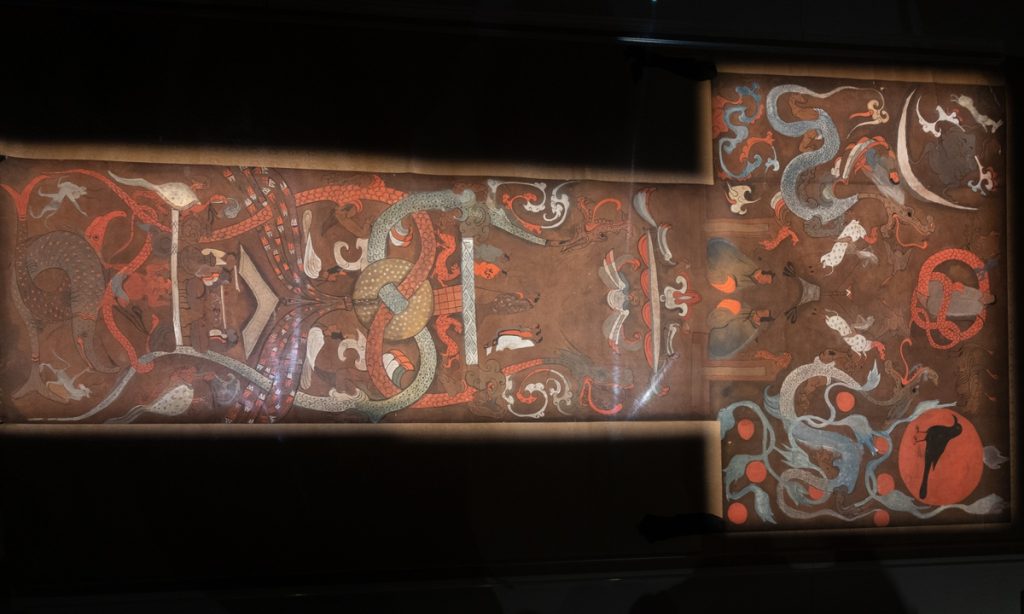Noble graves from 2,000 years ago offer insights into ancient Chinese beliefs about the afterlife

Editor's Note:
Fifty years ago, not only the archaeological community but also ordinary people were stunned by the excavation of the Mawangdui Han Tombs. Among the findings is a remarkable discovery known as China's "Sleeping Beauty" (Lady Xin Zhui), an over 2,100-year-old lady who looks nearly as good as she did when she was buried after dying at the age of about 50, during China's Western Han Dynasty (206BC-AD25). The world has marveled at the mystery behind her body, as well as the numerous precious treasures unearthed from the tombs, including textiles and bamboo and silk manuscripts.
In this Mawangdui trilogy, the Global Times culture desk explores the decades of work in unearthing, research and development that can be seen as a milestone of China's great archaeology achievements.
Have you ever caught a glimpse of an ancient corpse over 2,100 years old, with moist skin, elastic subcutaneous soft tissue, and movable joints? Have you heard of a piece of gauze clothing woven in the Han Dynasty (206BC-AD220) that weighs just 49 grams? And have you tried playing an elegant competitive game called Liubo chess, which was already commonplace before the Qin Dynasty (221BC-206BC)?
All of aforementioned treasures, unearthed from the Mawangdui Han Tombs 50 years ago, continue to stun numerous visitors every day at the Hunan Museum in Changsha, Central China's Hunan Province. These items are just a tiny part of more than 20,000 artifacts excavated from the Mawangdui Tombs, which embody the Han dynasty's grand vision of afterlife transformation, rooted in sophisticated cosmological and philosophical conceptions of life and the universe.
Yu Yanjiao, director of the Research Center for Exhibition and Collections of Mawangdui Han Dynasty Tombs at the Hunan Museum, told the Global Times that the daily life objects and dietary utensils unearthed reflect the living habits and dietary customs of ancient Chinese people. These customs have been passed down through generations and are still preserved in many places today, demonstrating the continuity of Chinese civilization in terms of lifestyle habits.
With the unprecedented discoveries in the tombs shocking the world, the 50th anniversary of the archaeological excavation of the Mawangdui Han Tombs has emerged as one of the most significant events in the Chinese and even international archeological field. To fully showcase the fruitful results in the preservation, research, and utilization of the archaeological excavation of the Mawangdui Han Tombs, an international academic seminar kicked off in Changsha in August.
Gao Chenglin, deputy head of the Hunan Provincial Institute of Cultural Relics and Archaeology, told the Global Times that the 50th anniversary of the archaeological excavation of the Mawangdui holds significant meaning, not only as a testament to the rich cultural heritage of China but also as a model for interdisciplinary collaboration in archaeological endeavors.
Model of research
For the past 50 years, over 4,000 scholars have devoted themselves to the study of the Mawangdui tombs, achieving the first truly multidisciplinary collaborative archaeological study of science and technology in the history of Chinese archaeology.
A comprehensive inventory of the artifacts unearthed from the tomb revealed a total of 26,937 items. The human remains, including the well-preserved body of Lady Xin Zhui, have been effectively protected through a comprehensive three-tiered approach at the holistic, cellular, and molecular levels, supported by a robust team from the Institute of Archaeology, Chinese Academy of Social Sciences, as well as the participation of a local medical college in Hunan Province in the preservation of the ancient corpses
"This model of national-level coordination and expert guidance has been inherited and promoted in other significant archaeological discoveries across China," Gao noted. The fruitful archeological discoveries and comprehensive research into the Mawangdui tombs have garnered significant attention both domestically and internationally.